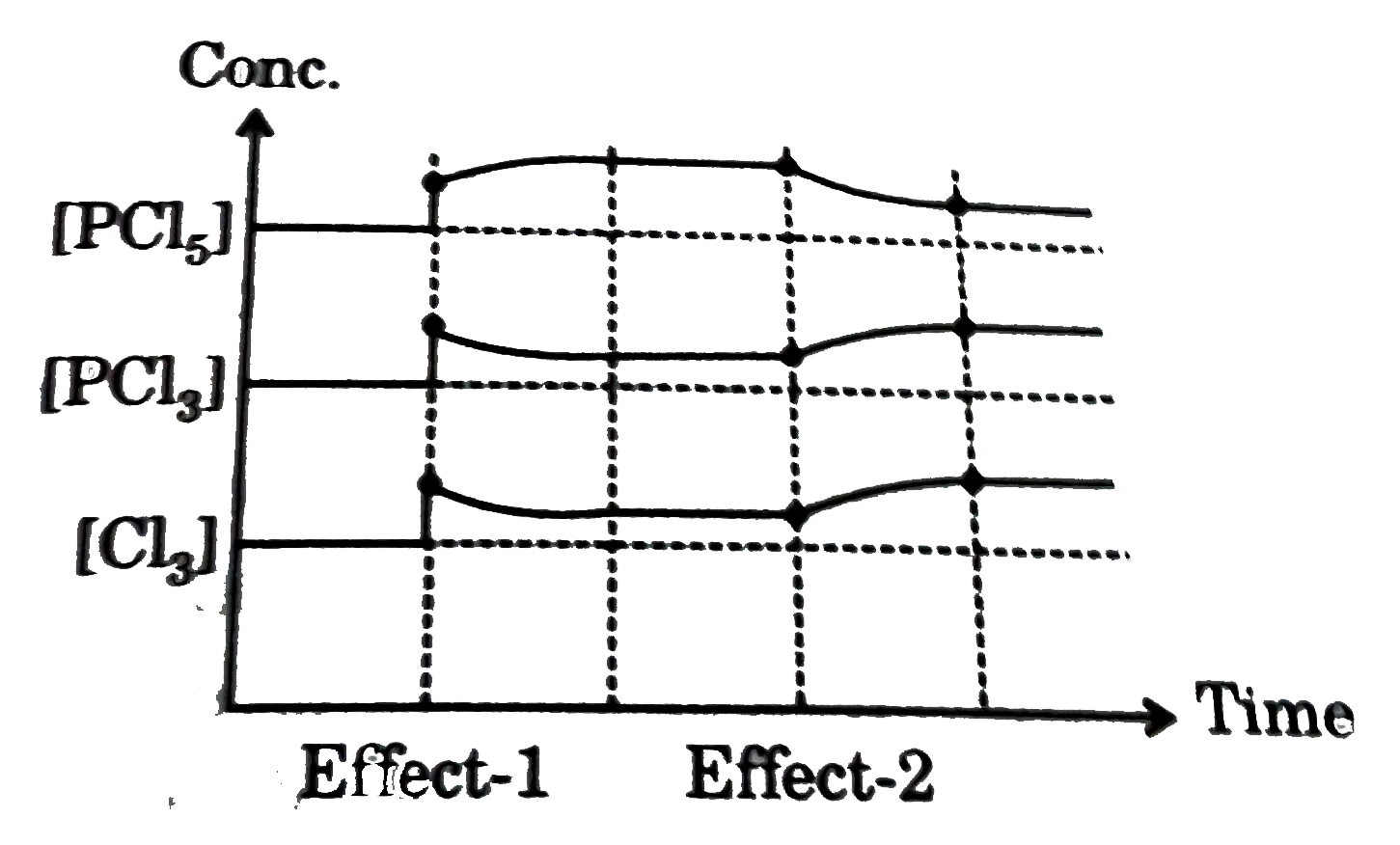Consider the reactions
(i) PCI5(g)⇔PCI3(g)+CI2(g)
(ii) N2O4(g)⇔2NO2(g)
The addition of an inert gas at constant volume
will increase the dissociation of PCl5 as well as N2O4
will reduce the dissociation of PCl5 aswell as N2O4
will increase the dissociation of PCl5 and step up the formation of NO2
will not disturb the equilibrium of the reactions
The correct Answer is:D
Step by step video, text & image solution for Consider the reactions (i) PCI_(5)(g)hArrPCI_(3)(g)+CI_(2)(g) (ii) N_(2)O_(4)(g)hArr2NO_(2)(g) The addition of an inert gas at constant volume by Chemistry experts to help you in doubts & scoring excellent marks in Class 11 exams.
Topper's Solved these Questions
- BOOK - RESONANCECHAPTER - CHEMICAL EQUILIBRIUMEXERCISE - Exercise-2 (Part-2)23videos
CHEMICAL EQUILIBRIUM
- BOOK - RESONANCECHAPTER - CHEMICAL EQUILIBRIUMEXERCISE - Exercise-2 (Part-3)34videos
CHEMICAL EQUILIBRIUM
- BOOK - RESONANCECHAPTER - CHEMICAL EQUILIBRIUMEXERCISE - Exercise-1 (Part-2)88videos
CHEMICAL EQUILIBRIUM
- BOOK - RESONANCECHAPTER - CHEMICAL BONDINGEXERCISE - Inorganic chemistry (Chemistry Bonding)49videos
CHEMICAL BONDING
- BOOK - RESONANCECHAPTER - D & F-BLOCK ELEMENTS & THEIR IMPORTANT COMPOUNDS EXERCISE - Match the column1videos
D & F-BLOCK ELEMENTS & THEIR IMPORTANT COMPOUNDS
Similar Questions
What happens when an inert gas is added to
i. PCl5(g)⇔PCl3(g)+Cl2(g)
ii. 2SO2(g)+O2(g)⇔2SO3(g)
at equilibrium at : (a) constant pressure and temperature and temperature, and (b) at constant volume and temperature.View SolutionWrite the relation between Kp and Kc for the following reactions :
(i) PCI5(g)⇔PCI3(g)+CI2(g)
(ii) N2(g)+3H2(g)⇔2NH3(g)
(iii) 2H2O(g)⇔2H2(g)+O2(g)
(iv) H2(g)+I2(g)⇔2HI(g)View Solution
Knowledge Check
- Question 1 - Select One
Consider the reactions
(i)PCl5(g)⇔PCl3(g)+Cl2(g)
(ii)N2O4(g)⇔2NO2(g)
The addition of an inert gas at constant volumeAwill increase the dissociation of PCl5 as well N2O4Bwill reduce the dissociation of PCl5 as well as N2O4Cwill increase the dissociation of PCl5 and step up the formation of NO2Dwill not disturb the equilibrium of the reactions. - Question 2 - Select One
Consider the reaction
(i) PC15(g)⇔PC13(g)+C12(g)
N2O4(g)⇔2NO2(g)
The addition of an inert gas at constant volumeAwill increase the dissociation of PC15 as well as N2O4Bwill reduce the dissociation of PC15 as well as N2O4Cwill increase the dissociation of PC15 and step up the formation of NO2Dwill not distrub the equilibrium of the reactions - Question 3 - Select One
For the reaction PCI5(g)→PCI3(g)+CI2(g)
AΔH=ΔEBΔH>ΔECΔH<ΔEDCan't predicted
What will be the effect of increase in pressure on the following equilibria :
(i)N2O4(g)⇔2NO2(g)
(ii)PCI5(g)⇔PCI3(g)+CI2(g)
(iii)N2(g)+3H2(g)⇔2NH3(g)
(iv)H2(g)+I2(g)⇔2HI(g)View SolutionVapour density of equilibrium PCI5(g)⇔PCI3(g)+CI2(g) is decresed by
View SolutionFor the gas - phase decomposition , PCI5(g)Δ⇐⇒PCI3(g)+CI2(g):
View SolutionConsider given endothermic reaction at equilibrium, PCI5(g)⇔PCI3(g)+CI2(g). A graph is ploted between concentration and time as shown. Effect-1 and Effect-2 is due to respectively are :
 View Solution
View SolutionFor the reaction: PCI5(g)⇔PCI3(g)+CI2(g)
The forward reaction at constant temperature is favoured byView Solution

